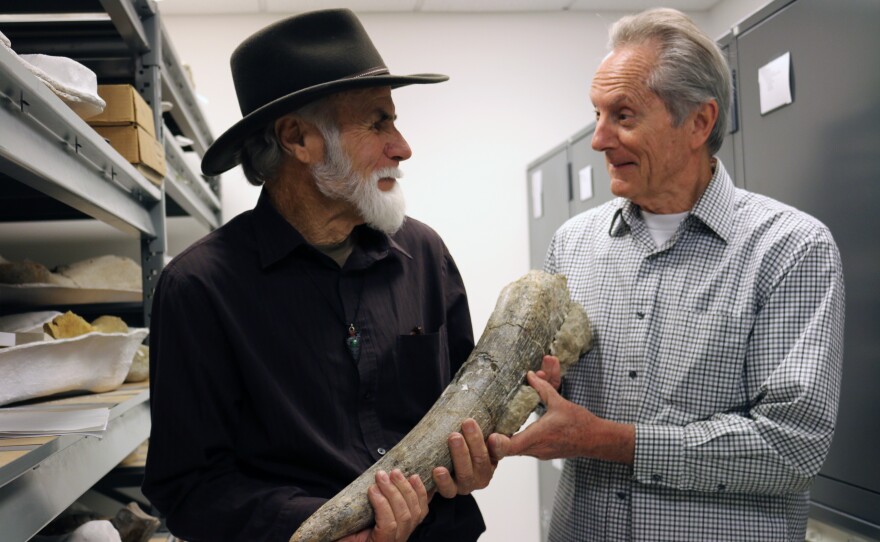Fossils discovered near a San Diego freeway more than 20 years ago are now challenging the broadly accepted timeline of when humans first arrived in North America.
Scientists at the San Diego Natural History Museum have co-written a new study that uses mastodon remains unearthed during a construction project on State Route 54 to make the explosive claim that humans existed in present-day San Diego as far back as 130,000 years ago.
Tom Deméré , the museum's curator of paleontology and one of the authors of the paper published Wednesday in the journal Nature, said, "It's essentially a new chapter in our understanding of the dispersal history of humans."
"It's a very big, bold statement," Deméré said. "And I think that we have really compelling evidence from a variety of different areas of this site that support that hypothesis."
The scientific consensus dates human settlement of the New World to about 15,000 years ago. Some recent studies have suggested an earlier arrival time, but none come close to the 130,000-year mark Deméré and his colleagues are putting forward.
The mastodon bones were first spotted by museum field paleontologist Richard Cerutti in 1992 during a freeway construction project. Cerutti was present in compliance with California regulations aimed at saving valuable fossils from being destroyed in routine construction work.

More than 20 years after the discovery, scientists now know that the bones are remarkable for their age and their signs of human manipulation.
The bones were found fractured and scattered around the site next to stones that appear to have been used as hammers and anvils. The scientists say all signs point toward humans using this site as a place to break the mastodon's bones and extract their marrow or fashion them into tools.
Determining the age of the fossils proved difficult. A common dating technique that relies on collagen did not work because the mastodon's teeth were too degraded. The scientists instead studied long-lived radioactive elements in the bones, which aged the mastodon at 130,000 years, give or take about 9,000 years.
Scientists did not find any human remains at the site, leaving a slew of questions open to further research: Did these early humans travel to present-day San Diego over land or sea? Did they survive here for a long period of time, or did they die out fairly quickly? Were they Homo erectus, Neanderthals or some other type of human ancestor?
Deméré said the discovery raises as many questions as it answers. But he is confident this site shows humans living in this part of the world more than 100,000 years earlier than previously thought, coexisting with animals like mastodons, mammoths and giant ground sloths.
"That has changed my perspective a bit — that humans were actually here interacting with this exotic menagerie of now extinct animals," Deméré said.
In an article in Nature commenting on the study, archaeology professor Erella Hovers of the Hebrew University of Jerusalem writes the authors' evidence "has been rigorously researched and presented" and could be "difficult to refute."
"Time will tell whether this evidence will bring a paradigm change in our understanding of processes of hominin dispersal and colonization throughout the world, including in what now seems to be a not-so-new New World," Hovers writes.













